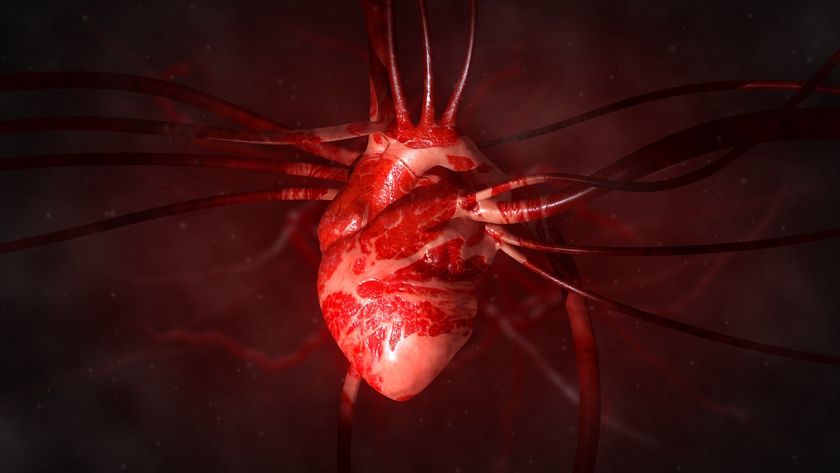Different Drums: Male and Female Hearts Don't Age the Same

Men and women will always have their differences, but a new analysis finds that these differences extend to heart anatomy.
The "hearty" differences became apparent only after researchers studied nearly 3,000 adults for about 10 years. By the end of the study, published online today (Oct. 20) in the journal Radiology, the researchers found that male and female hearts grow differently over time.
The study focused on one heart chamber, the left ventricle, which pumps oxygenated blood out of the heart into the body. As people age, the left ventricle declines in its capacity to pump blood.
But the researchers found that this decline happens differently depending on a person's sex: In men, the heart muscle around the chamber grows larger and thicker with age, while in women the muscle maintains its size or gets smaller, the researchers found. [Your Heart Health: 5 Numbers to Know]
It's unclear why these sex-based differences occur, but this "fascinating discrepancy" may help researchers determine whether gender-specific therapies are necessary for men and women who have heart problems, the researchers said.
"Our results are a striking demonstration of the concept that heart disease may have different pathophysiology in men and women, and of the need for tailored treatments that address such important biologic differences," senior study author Dr. João Lima, a professor of medicine and radiological science at the Johns Hopkins University School of Medicine in Baltimore and director of cardiovascular imaging at the school's Heart and Vascular Institute, said in a statement.
The study is the first long-term research using MRI scans to observe left ventricle structure and function over time, the researchers said. Other researchers have examined people's hearts using ultrasound scans, but MRI scans are more detailed, the researchers in the new study said.
Sign up for the Live Science daily newsletter now
Get the world’s most fascinating discoveries delivered straight to your inbox.
The study included 2,935 adults ages 45 to 84 years. None of the participants had cardiovascular diseases when they enrolled in the study. The doctors performed an MRI scan on each participant at the beginning and end of the study.
From the scans, the doctors assessed the size and volume of the participant's left ventricle, and calculated its weight.
Over the study period, the left ventricle in men gained an average of 0.3 ounces (8 grams). In contrast, it lost an average of 0.06 ounces (1.6 grams) in women, the researchers found.
Moreover, the heart's filling capacity (the amount of blood the left ventricle can hold between heartbeats) fell in both sexes. But this was more pronounced in women, with a drop of about 0.4 fluid ounces (13 milliliters), compared to just under 0.3 fluid ounces (10 mL) in men.
These differences emerged even after the researchers controlled for body weight, blood pressure, cholesterol levels, exercise levels and smoking.
These sex-related differences suggest that "men and women may develop [heart] disease for different reasons," said lead investigator Dr. John Eng, an associate professor of radiological science at Johns Hopkins. [Don't Sit Tight: 6 Ways to Make a Deadly Activity Healthier]
The findings may help doctors create gender-specific treatments, the researchers said. For instance, cardiologists often prescribe medications that reduce the thickness of heart muscle in people with heart failure. But this treatment might not benefit women as much as it does men, given that women's heart muscle tends to shrink or stay the same size over time, the researchers said.
The study is part of an ongoing, long-term project named the Multi-Ethnic Study of Atherosclerosis (MESA). Researchers plan to continue following the nearly 7,000 people of different ethnic backgrounds who are enrolled, and studying factors that influence these people's heart diseases and failures, the investigators said.
Follow Laura Geggel on Twitter @LauraGeggel. Follow Live Science @livescience, Facebook & Google+. Original article on Live Science.

Laura is the archaeology and Life's Little Mysteries editor at Live Science. She also reports on general science, including paleontology. Her work has appeared in The New York Times, Scholastic, Popular Science and Spectrum, a site on autism research. She has won multiple awards from the Society of Professional Journalists and the Washington Newspaper Publishers Association for her reporting at a weekly newspaper near Seattle. Laura holds a bachelor's degree in English literature and psychology from Washington University in St. Louis and a master's degree in science writing from NYU.











